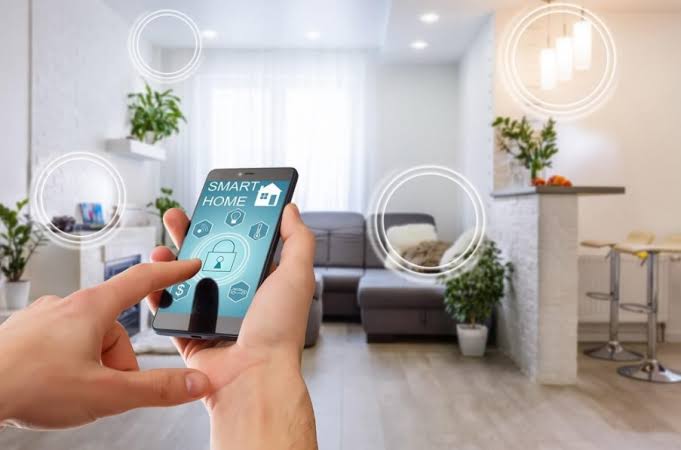Smart home technology has moved far beyond voice-controlled assistants and programmable thermostats. What began as a convenience-driven trend has grown into a transformative force reshaping how people live, secure, and interact with their living environments. As of 2025, innovations in artificial intelligence, connectivity, and sustainability are converging to redefine the concept of the modern home. This shift isn’t just about new devices—it’s about seamless automation, predictive environments, and personalized experiences that learn and adapt over time.
Integration of AI for Personalized Living
Artificial intelligence is playing an increasingly central role in how smart homes function. AI-powered home assistants like Alexa, Google Assistant, and Apple’s Siri are now capable of contextual awareness. This means they not only follow commands but also anticipate needs based on behavior patterns. For example, your smart home might suggest dimming the lights and playing relaxing music after it notices a consistent wind-down routine around 9 PM.
AI is also driving adaptive climate control, which goes beyond mere scheduling. By learning your preferences, occupancy trends, and even outdoor weather patterns, smart thermostats and window treatments can optimize temperature, airflow, and energy consumption in real time.
These systems continuously gather and analyze data, leading to increasingly intuitive responses that deliver a uniquely tailored living experience.
The Rise of Interoperability and Ecosystem Unification
In the early stages of smart home development, one of the biggest frustrations was the lack of compatibility between devices from different brands. Today, that’s rapidly changing thanks to platforms like Matter—a unified standard backed by major players like Apple, Google, Amazon, and Samsung.
Matter enables different smart home devices to work together seamlessly, regardless of brand. This means users can mix and match devices—smart bulbs from Philips Hue, sensors from Aqara, and locks from Yale—all controlled within a unified ecosystem.
Interoperability also allows for more complex automation scenes. A single voice command like “goodnight” could simultaneously lock doors, lower blinds, adjust lights, and turn on security—all without switching apps or systems.
Smart Kitchens and Appliances That Think for You
The kitchen is fast becoming the new frontier in smart home innovation. In 2025, AI-integrated refrigerators can now scan their contents and suggest recipes based on what’s inside. Some models even sync with grocery delivery services to automatically reorder items when supplies run low.
Ovens are now equipped with internal cameras and AI algorithms that can identify food and suggest optimal cooking settings. Smart dishwashers and washing machines can detect load sizes, water hardness, and detergent levels, adjusting cycles for maximum efficiency.
These innovations are not only about convenience but also about sustainability—minimizing food waste, energy use, and water consumption through smarter decision-making.
Enhanced Security and Predictive Surveillance
Security remains one of the top reasons homeowners invest in smart technology. The latest innovations go well beyond motion detection. In 2025, advanced AI surveillance systems can now differentiate between humans, animals, and inanimate movement—reducing false alarms.
Facial recognition and biometric access are replacing traditional keys and codes. Video doorbells can identify frequent visitors and deliver custom greetings. Some systems even allow for real-time communication with emergency services, complete with video feed sharing.
Moreover, predictive analytics can now alert homeowners to suspicious behavior before a breach occurs. For instance, if someone lingers unusually long at your front door without ringing the bell, the system can notify you or activate a spotlight automatically.
Voice and Gesture Control Evolution
Voice control has been a major breakthrough in smart homes, but the future points to multimodal interaction. New devices now integrate gesture recognition using cameras and radar sensors. You can adjust volume, skip songs, or dim lights with a wave of your hand.
Smart glasses and wearable tech are also beginning to integrate with home systems. Imagine adjusting your thermostat or answering your door simply by looking at a screen on your wrist or through augmented reality overlays.
This move toward frictionless interaction makes smart homes more accessible, especially for users with disabilities or those who prefer hands-free control in messy or busy situations, such as cooking or cleaning.
Energy Efficiency and Sustainable Innovations
Energy efficiency has become a cornerstone of future smart home innovations. Homes are becoming increasingly self-aware and self-regulating. Smart energy monitors now track consumption down to individual appliances, giving users a detailed view of where they can reduce usage.
Solar panel integration with home batteries—like Tesla’s Powerwall—now allows homeowners to store excess solar energy and use it during peak hours. These systems intelligently distribute power to high-usage devices based on time-of-day energy costs, saving money and reducing environmental impact.
Water-saving technologies are also advancing. Smart irrigation systems use real-time weather data to water lawns more precisely, while leak detectors shut off water automatically to prevent damage.
Key Benefits Driving Future Smart Home Adoption
- Convenience and Comfort: Automated environments that adapt to lifestyle routines improve overall comfort and save time.
- Security and Peace of Mind: Real-time alerts, AI-driven surveillance, and remote monitoring create a safer home environment.
- Energy and Cost Savings: Real-time data insights and automation lead to more efficient energy and water usage.
- Accessibility and Inclusivity: Voice, gesture, and biometric control make smart homes more usable for the elderly and those with disabilities.
- Future-Proof Living: Integration with cloud platforms and AI ensures systems continue to learn, update, and remain relevant.
Conclusion
The future of smart home technology is no longer a distant vision—it’s already unfolding in homes around the world. As we move deeper into 2025 and beyond, innovations will continue to center around intelligence, sustainability, security, and personalization. Homes will evolve from being passive structures to proactive environments that enhance every aspect of daily life.
For homeowners, the key will be investing in open, secure, and scalable technologies that not only meet current needs but can grow with the innovations yet to come. The smart home of the future isn’t just about gadgets—it’s about creating an intelligent, responsive, and empowering space that supports better living.




Interesting
Interesting